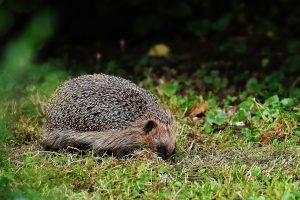Introduction: Why Curiosity About Nature Matters
Curiosity is the driving force behind discovery, learning, and personal growth. When it comes to the natural world, curiosity is more important than ever. In a time when urbanization and technology dominate our lives, the desire to understand and connect with nature can have incredible benefits, not only for your mental and physical health but for the planet too.
Whether you’re hiking in the wilderness or simply enjoying your local park, staying curious about the natural world can help you foster a deeper appreciation for the environment and inspire actions that benefit the earth. In this guide, we’ll share simple yet powerful ways to stay curious about the natural world and make learning about nature an exciting part of your life.
1. Embrace Nature with Daily Exploration

The best way to stay curious about nature is to explore it regularly, even if it’s in small ways. Every park, garden, or trail has something unique to offer.
How to Explore Nature:
- Take daily walks in your local neighborhood or nature reserve.
- Observe the changing seasons in your backyard or local park.
- Bring a nature journal to sketch or write observations.
Benefits:
- Builds a strong connection with your surroundings.
- Teaches you to notice and appreciate the little details.
- Promotes physical activity and well-being.
Pro Tip:
Start small—spend just 10-15 minutes each day outdoors and gradually increase your time as your curiosity grows.
2. Learn from Nature Documentaries and Books
Sometimes, we can’t explore nature directly, but documentaries and books are a great way to keep learning and feeding your curiosity. They allow you to delve into nature’s wonders, even when you’re at home.
How to Use Documentaries and Books to Stay Curious:
- Watch nature documentaries on platforms like Netflix, YouTube, or Disney+.
- Read books or articles on natural history, ecology, and the behavior of animals.
- Join online communities to discuss fascinating discoveries.
Benefits:
- Expands your knowledge on a variety of environmental topics.
- Provides insights into ecosystems, animals, and plants that you can’t easily observe in person.
- Fosters a deeper appreciation for nature’s complexity.
Pro Tip:
Pick a new documentary or book each month to broaden your understanding of different natural environments, from rainforests to deep oceans.
3. Observe and Document the World Around You
Becoming a nature observer is one of the easiest ways to nurture curiosity. Observation teaches you to pay attention to the behavior of animals, the growth of plants, and how the weather changes. You can also document your findings to track patterns and make connections.
How to Observe Nature Effectively:
- Take photos of interesting animals, plants, or landscapes.
- Keep a nature journal or digital diary to note down your observations.
- Use apps like iNaturalist to identify species and share findings.
Benefits:
- Builds mindfulness and sharpens observational skills.
- Offers a personal record of your discoveries to reflect on.
- Connects you with local wildlife and plant life.
Pro Tip:
Look for seasonal patterns—observing how things change throughout the year helps you see the cycles of nature.
4. Engage with Nature Through Hands-On Activities
Getting your hands dirty is one of the most fun ways to stay curious about nature. Engaging in hands-on activities not only satisfies your curiosity but also provides a tangible connection to the environment.
Nature Activities to Try:
- Start a garden and experiment with growing different plants.
- Participate in local tree planting events or beach clean-ups.
- Try birdwatching or insect identification using field guides.
Benefits:
- Increases practical knowledge of natural processes.
- Helps build sustainable habits and environmental stewardship.
- Connects you to your local community.
Pro Tip:
Join local environmental groups or volunteering programs to participate in hands-on conservation efforts.
5. Use Technology to Explore and Learn
In today’s digital age, technology can be an incredible tool to fuel your curiosity. From interactive apps to virtual wildlife tours, technology can open up a world of natural wonders right at your fingertips.
How to Leverage Technology:
- Use nature apps like Seek or Merlin to identify wildlife, plants, and birds.
- Explore virtual tours of national parks or museums focused on natural history.
- Join online forums or social media groups to connect with other nature enthusiasts.
Benefits:
- Instant access to a wealth of knowledge at your fingertips.
- Makes learning about nature accessible, even from home.
- Offers immersive experiences in remote locations and ecosystems.
Pro Tip:
Download apps that help you track local wildlife and explore your environment virtually if you can’t travel far.
6. Take Part in Citizen Science Projects
One of the best ways to stay curious and contribute to nature’s preservation is by participating in citizen science projects. These initiatives invite people from all over the world to help collect data on various environmental aspects, such as climate change, wildlife, and biodiversity.
How to Get Involved in Citizen Science:
- Volunteer for research projects or data collection on environmental monitoring platforms like SciStarter.
- Participate in local biodiversity surveys or bird counts.
- Join apps that collect data about weather patterns, plant species, or animal sightings.
Benefits:
- Directly contributes to environmental conservation.
- Provides a sense of accomplishment and connection to global scientific efforts.
- Gives you hands-on experience with nature research.
Pro Tip:
Look for projects aligned with your specific interests, such as marine biology or forest conservation, to make it even more exciting.
7. Ask Questions and Stay Curious

Never stop asking questions about the natural world. Curiosity is driven by a desire to understand. The more questions you ask, the more you’ll discover.
How to Cultivate Curiosity:
- Keep asking “why” and “how” when nature exploration.
- Research your questions online or in books to discover the answers.
- Share your questions with others and have conversations about nature.
Benefits:
- Promotes lifelong learning.
- Sparks new discoveries and deeper insights.
- Engages your mind and makes exploration more fun.
Pro Tip:
Try to find the answers to your questions by observing, reading, or even asking local experts like park rangers.
Comparative and analysis table on How to Stay Curious About the Natural World:
| Strategy | Best For | Key Actions | Benefits | Challenges | Ideal For |
|---|---|---|---|---|---|
| Daily Nature Exploration | Anyone looking for a daily connection with nature | Take walks in local parks, trails, or your backyard. Carry a journal to document observations. | Builds a habit of mindfulness; connects with local nature | Requires consistency; weather can be limiting | Nature enthusiasts or people with a flexible schedule |
| Watching Nature Documentaries & Reading Books | Beginners or those unable to travel outdoors | Watch documentaries or read books about wildlife, ecosystems, or environmental science. | Expands knowledge; offers insights into distant ecosystems | Can feel passive; requires dedication to learn deeply | People with limited access to nature or looking for easy learning methods |
| Observation & Documentation | Those who enjoy hands-on learning | Take photos, draw, or write about natural elements like animals, plants, and weather. Use apps for identification. | Sharpens observational skills; creates a personal record | Time-consuming; requires attention to detail | Curious individuals who like to track patterns or enjoy journaling |
| Hands-On Activities (Gardening, Volunteering) | Those who want active participation in nature | Engage in gardening, join environmental volunteering efforts like tree planting, or assist in local conservation. | Provides practical knowledge; fosters environmental responsibility | Can be physically demanding; requires a time commitment | Those looking to contribute to environmental causes or develop practical skills |
| Using Technology (Apps, Virtual Tours) | Tech-savvy nature lovers or those with limited mobility | Explore nature through apps like Seek or Merlin, or join virtual tours of national parks and museums. | Makes learning accessible; connects with remote ecosystems | May lack the personal connection that physical exploration offers | Those who enjoy technology and virtual experiences |
| Citizen Science Projects | Environmental advocates and budding scientists | Participate in wildlife tracking, data collection, or environmental monitoring through platforms like SciStarter. | Contributes to real-world research; connects with a global community | Requires access to platforms and sometimes specialized knowledge | People eager to contribute to research or learn with purpose |
| Asking Questions & Researching | Inquisitive individuals | Continuously ask “why” and “how” about nature and research the answers through books, apps, and discussions. | Promotes deeper learning; sparks lifelong curiosity | Requires dedication to research; answers may be complex | Individuals with a deep desire to understand the world around them |
| Social Engagement (Discussions, Online Communities) | Social learners and those seeking connection | Join online forums or nature clubs, engage in discussions, or share findings through social media. | Builds a community of like-minded individuals; fosters continuous learning | May require social media engagement; need for consistent interaction | People who enjoy group learning or want to expand their social circle in nature-related topics |
| Seasonal Exploration | Those interested in observing nature’s cycles | Observe seasonal changes in local ecosystems or track migrating animals and changing plant life. | Connects with nature’s cycles; teaches patience and long-term observation | Limited by the seasons; needs long-term commitment | Those who prefer gradual, in-depth exploration over time |
This table highlights various strategies to stay curious about the natural world, comparing the best audience, key actions, benefits, challenges, and who each approach is most suitable for.
Conclusion: Foster a Lifelong Curiosity About Nature
Staying curious about the natural world is an enriching experience that not only connects you to the environment but also deepens your appreciation for the intricate beauty and complexity of the planet. This curiosity encourages a sense of wonder, inviting you to observe the world around you and understand how all living things are interconnected. Whether you’re exploring your local park, hiking through a nearby forest, or learning through captivating documentaries, each step you take toward understanding nature helps build a lasting connection with the Earth that nurtures both personal growth and environmental stewardship.
Exploring nature with a curious mindset can open your eyes to the many layers of life that exist just outside your door. A simple walk in the park, where you stop to observe the different species of birds, plants, and insects, can be a profound learning experience. Taking time to understand the ecosystems in your area—how plants interact with the soil, how animals communicate, or how weather patterns influence the environment—will inspire a deeper connection to the land you live on.











